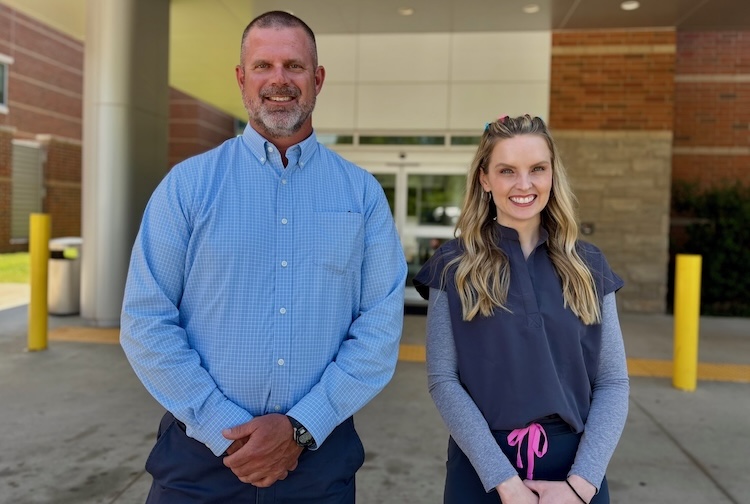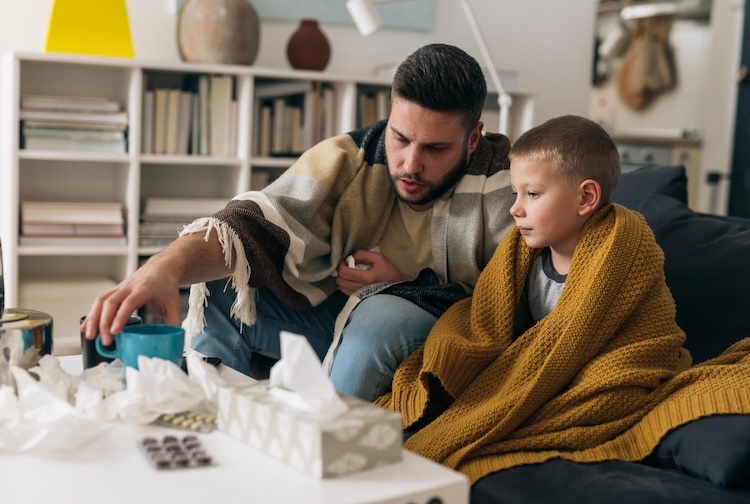Splash with caution: What lake lovers need to know this summer
Knowing what to do if there’s an emergency on the lake can help make the summer season enjoyable and less stressful.
May 15, 2025.jpg) Splash safely on local lakes and rivers this summer with expert advice on swimming and boating from trauma team members from VCU Health Community Memorial Hospital the US Army Corps of Engineers. (Getty Images)
Splash safely on local lakes and rivers this summer with expert advice on swimming and boating from trauma team members from VCU Health Community Memorial Hospital the US Army Corps of Engineers. (Getty Images)
By Shea Wright and Sara McCloskey-Nieves
As warmer weather returns to Southside Virginia, families across the region head to Lake Gaston, John H. Kerr Dam & Reservoir (Kerr Reservoir) and nearby swimming spots to soak up the sunshine and enjoy a refreshing splash. However, local experts remind us that the key to making the most of your time on the lake is simple: be prepared.
Over the past 10 years, nearly 90% of people who died at public recreation facilities were not wearing lifejackets, according to the U.S. Army Corps of Engineers. Most of those deaths (47%) also happened while people were swimming in areas not designated for swimming, and more than 20% happened because of falling from boats, docks and shorelines.
“We see a lot of jet ski and tubing injuries due to the high speeds and sudden impacts that can cause bruises, broken bones or concussions,” said Michelle Williams, a registered nurse in the emergency department at VCU Health Community Memorial Hospital (CMH). “Boating accidents especially at nighttime when boaters are not familiar with the water which can lead to collisions, falls overboard and trauma. Diving injuries are also common due to diving into shallow water which can cause head, neck, and spinal cord injuries.”
From the shoreline to the emergency room, CMH’s trauma team is working behind the scenes with close community partners, including the Army Corps of Engineers at Kerr Reservoir, to ensure lake days stay safe for everyone.

VCU Health Community Memorial Hospital trauma team members Chad Springer and Michelle Johnson, RN. (Shea Wright, Enterprise Marketing and Communications)
Prevention starts before you head out
Develop a water safety plan that includes life jackets for every member of the family, safety checks on your boat and vessel, learn basic CPR, and never swim alone.
Drowning is the number one cause of death for children between 1 and 4 years old in the United States, according to the Centers for Disease Control and Prevention.
“Ensure everyone wears a life jacket, especially children and non-swimmers,” Williams said. “It’s important to keep an eye on children when they are near and in the water. Don’t rely on floaties or other toys for safety. Always keep children at arm’s length and avoid distractions. Drowning can happen silently and quickly even in shallow water.”
What else should you do before heading out for a day on the water?
- A good rule of thumb is to check weather and water conditions and prepare accordingly. You can also check for updates on the Army Corps of Engineers Kerr Reservoir website.
- Keep a well-stocked first aid kit with emergency contact numbers and insurance information.
- If you’re boating, tell a friend or family member where you are going and when you expect to return. If they don’t hear from you by a certain time, tell them to call the South Hill Police Department’s non-emergency line at (434)-447-3103.
- Bring plenty of water to stay hydrated and avoid alcohol while boating or swimming.
- Swim in designated areas that are marked, inspected and maintained. If there isn’t a lifeguard in those areas, make sure to keep your eyes on others in the water.
For those who spend time at Kerr Reservoir or any of the surrounding waterways, the U.S. Army Corps of Engineers is a familiar name. Kerr Reservoir sees on average four million visitors a year with most of them visiting between April and October. During the busy season, rangers, staff and volunteers are heavily focused on educating visitors on water safety, with their program called “Reach, Throw, Row, Don’t Go (go for help).”
“Water safety begins before you even get in the water,” said Emily Jones, an outreach park ranger with the U.S. Army Corps of Engineers. “Encourage your family and friends to wear a life jacket, always swim with a friend, learn the signs of someone drowning and how to safely help them, take a boater safety course, and pay attention to those around you while you are out on the water.”
 US Army Corps of Engineers outreach park ranger Emily Jones shares ways to stay safe when swimming and boating this summer at events in the community. (Contributed photo)
What to do when there’s an emergency on the water
US Army Corps of Engineers outreach park ranger Emily Jones shares ways to stay safe when swimming and boating this summer at events in the community. (Contributed photo)
What to do when there’s an emergency on the water
Even with the best preparation, emergencies can still happen. That’s when the trauma team at CMH steps in. They work closely with local fire and rescue, law enforcement, the Department of Wildlife Resources (DWR) and the Army Corps of Engineers because coordination is especially important in rural areas, where travel time from the lake to the hospital can impact care, and cellphone service can be unreliable.
“Our role is to make sure every piece of the response puzzle fits together quickly and effectively,” CMH’s trauma program manager Chad Springer said. “With the vast amount of water-related recreational activities that occur locally, it’s very important that our team work together to assess the severity of the injury. We closely coordinate arrival of the patient with our first responders and emergency department staff to provide care as fast as possible.”
The first thing to do if you see an accident happen is call 911. You can also alert others nearby by shouting for help to attract attention from lifeguards or others who may be trained. Make sure you are in a safe area as well.
“Don’t jump in unless you’re trained and it’s safe to do so. Many rescuers become victims themselves by jumping into the water in an attempt to pull a family member or friend to safety. Instead, alert others nearby by shouting for help to attract attention from lifeguards or others who may be trained,” Williams said.
Here are some other ways you can help if there is an emergency on the lake:
- Encourage the person to remain calm.
- Toss a flotation device into the water and try to pull them to the side of the boat or shore.
- Once you get them out of the water, lay the person flat and assess their condition. Check their breathing and pulse. If there are none, start CPR immediately and continue until help arrives.
- If their breathing and pulse are stable, keep the person warm and stay with them as you wait for lifeguards or first responders.
Be aware of waterborne pathogens
While you are keenly aware of the injuries that might happen from watersports or not wearing a life jacket, there are other hazards lurking in the depths of lakes and rivers.
Microorganisms called pathogens can be found in bodies of water, including bacteria, viruses and parasites. Waterborne pathogens can cause people and animals to get sick. VCU Health experts say some of the most common waterborne pathogens in freshwater are different types of algae blooms and E.coli.
Symptoms of waterborne illnesses vary depending on what type of pathogen enters your body. Some symptoms include diarrhea, stomach cramps, loss of appetite, weight loss, nausea/vomiting, gas and dehydration, however, some can be more serious and lead to infections. If left untreated, waterborne illnesses can lead to a range of long-term health problems that weaken the immune system, including chronic gastrointestinal issues.
“Populations most vulnerable to waterborne illnesses are young children, especially under 5 years old, due to their underdeveloped immune systems and older adults,” Williams said. “Immunocompromised individuals with conditions like HIV/AIDS or those undergoing chemotherapy or organ transplant are also at higher risk of prolonged or severe infections. Expecting mothers should also be cautious in and around lakes and rivers.”
You can prevent infections and illness by:
- Avoid swimming in recreational areas when there are safety alerts for algae blooms or waterborne pathogens.
- Keeping your mouth closed while swimming and not ingesting contaminated water.
- Pay close attention to children when they’re playing or swimming, as they might accidentally swallow water.
- Use nose plugs, pinch your nose or keep your head above water.
- If you have an open cut or wound (surgery or a new piercing), stay out of the water.
Overall, when you’re heading to the lake or river for some fun in the sun, a little preparation can make all the difference.
“If we could give families one piece of advice, it would be to take water safety seriously,” Williams said. “And always, make sure everyone is wearing a properly fitted life jacket in the water on a boat or watercraft.”
What to know about waterborne pathogens




